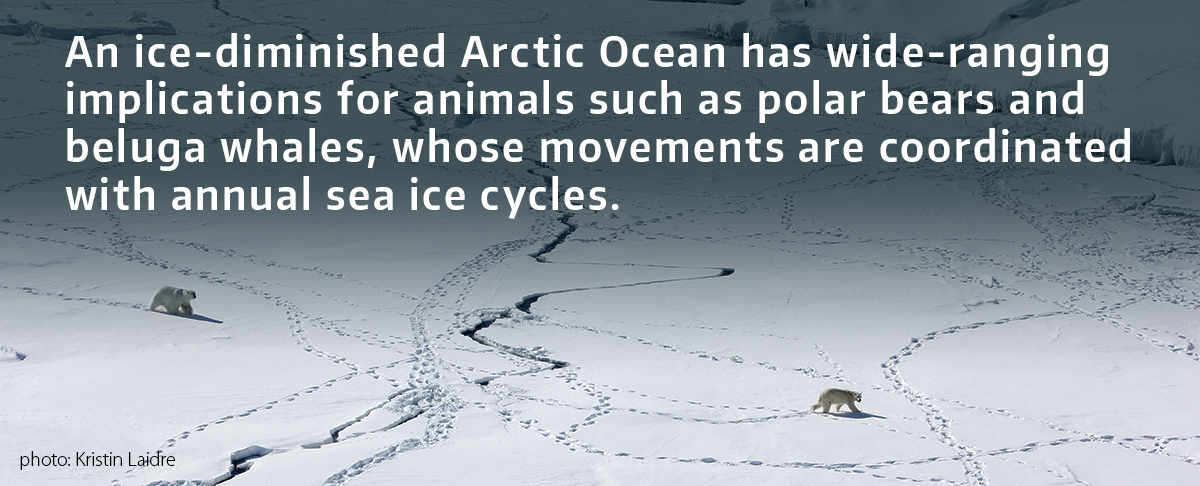
|
|
APL-UW scientists are renowned for their ability to analyze the changing air–ice–ocean system in the Arctic, especially the decreasing summertime extent and volume of sea ice. An ice-diminished Arctic Ocean has wide-ranging effects on animals, whose movements coincide with annual sea ice cycles. Several APL-UW scientists, with expertise spanning many disciplines, are working to link the physics and biology of climate change in the Arctic. There may be no greater icon of the Arctic than polar bears. Sea ice is their platform for life. They rely on it to travel, hunt, and reproduce. With earlier sea ice breakup in spring, delayed freeze-up in autumn, and thinner, broken floes that are more easily blown by winds, polar bear habitat is in danger. Can this threat be measured? Biologist Kristin Laidre and mathematician Harry Stern used a decades-long satellite record of daily sea ice concentration to construct a clear an concise indicator of polar bear habitat health that encompasses the entire circumpolar Arctic. They report that now polar bears have access to good sea ice habitat for seven weeks fewer each year than they did three decades ago because of earlier retreat and later advance. A key strength of the sea ice indicator of polar bear habitat is that it can be applied consistently and comprehensively across all 19 polar bear subpopulations, from Baffin Bay to the Kara and Chukchi seas. |

Beluga whales are the most abundant cetacean in the Arctic. Their spring migration northward through Bering Strait and into the Chukchi and Beaufort seas follows the spring and summer sea ice retreat. With a longer ice-free season, are belugas spending more time in these habitats? For some belugas the answer is yet, and for others, no. Marine biologist Donna Hauser, oceanographer Kate Stafford, Laidre, Stern, and colleagues are the first to report that over the course of a decade the Chukchi subpopulation shifted their fall migration later by two to four weeks, coinciding with observed delays in the onset of freeze-up. The Beaufort subpopulation, however, has not changed the timing of fall migration. Sea ice is only one factor affecting summer–fall habitat selection for belugas. Dynamic regional hydrography influences the distribution and abundance of prey. The extended residence of the Chukchi subpopulation in a preferred habitat suggests that belugas can respond quickly to ecosystem changes. |
| a glimpse into 18th century arctic climate | navigate | |||

Captain James Cook’s logs and maps plot the sea ice edge that he encountered in August 1778 when he sailed north through the Bering Strait. These earliest records of summer ice extent underscore the dramatic recent changes in Arctic climate. |
||||





